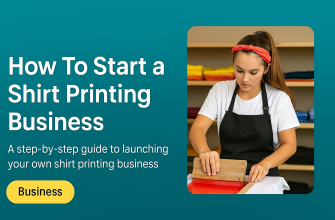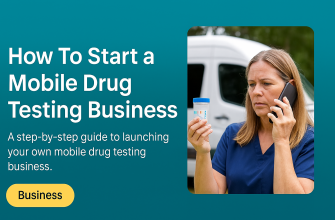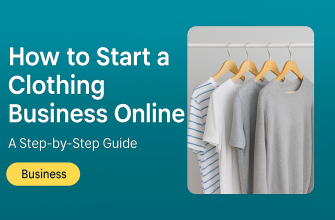Starting a jewelry business is more than just opening a shop or launching a website – it’s about sharing your creative spark with the world. As a business coach who’s helped many women turn their passion into profit, I know the mix of excitement and fear that comes with taking the leap. Yes, you can do this! Whether you have zero business background or some entrepreneurial experience, this guide will walk you through the journey step by step. By the end, you’ll not only have practical tips for building your jewelry brand (online or on Main Street) but also the confidence to make it happen. Remember, every successful jeweler started exactly where you are now – with a dream and a willingness to learn.
Between 2019 and 2023 alone, women entrepreneurs in the U.S. launched 1.7 million new businesses, contributing over $579 billion in revenue. The rise of women-owned businesses is no coincidence – we are claiming our space in every industry, jewelry included. In fact, the global jewelry market is booming (expected to grow by $88 billion from 2024 to 2029), leaving plenty of room for newcomers like you to find an untapped niche or bring a fresh style to the craft. So if you’re looking for a creative way to make a living doing what you love, you’re in the right place. Let’s turn that sparkly idea of yours into a shining reality!
- 1. Finding Your Niche and Crafting Your Brand Story
- 2. Designing Your Path: Online, Brick-and-Mortar, or Both?
- 3. Sourcing Your Jewelry: Handmade vs. Wholesale (and Staying Sustainable)
- 4. Building on Solid Ground: Legal and Logistical Setup
- 5. Funding Your Dream: From Bootstrapping to Business Grants
- Ready to Shine? Your Next Steps
1. Finding Your Niche and Crafting Your Brand Story
“What makes your jewelry unique?” This is one of the first questions I ask my coaching clients. The jewelry industry is full of niches and styles – from minimalist silver pieces to bold statement necklaces, from eco-friendly handmade gems to high-end bridal sets. Take some time to define your niche and the story behind your brand. Ask yourself:
-
Who do you envision wearing your jewelry? (Young professionals, brides, boho free spirits, moms, fashionistas?)
-
What makes your collection special? (Materials like sustainable recycled silver? A cultural inspiration? Personalized name jewelry? A signature technique you use?)
-
Why are you passionate about this? (Maybe you started making jewelry to celebrate your heritage, or you want to give women confidence through accessories, etc.)
Your answers will shape your brand identity. For example, if your niche is sustainable bohemian-chic jewelry for free-spirited women, your brand story might highlight how you travel the world to source eco-friendly beads and how each piece has a meaning. Your brand visuals would likely be earthy and artistic. On the other hand, if you’re all about modern, minimalist gold pieces for the career woman, your story might focus on empowerment and elegance, with sleek, luxurious visuals.
Branding means deciding on a name that’s memorable, a logo and color palette that reflect your style, and a consistent voice for how you communicate. It also means crafting an emotional narrative. People don’t just buy jewelry – they buy the feeling and values it represents. So let your personality shine through your brand! For instance, share the journey of how you fell in love with jewelry-making or why supporting a cause (like donating a portion of proceeds to women’s shelters or using fair-trade materials) matters to you. A heartfelt mission will resonate with customers and set you apart.
Coach Alex’s Tip: Don’t be afraid to start small and specific. You might worry about narrowing your audience, but focusing on a niche can actually help you stand out. You can always expand your line later. As one of my clients realized: “When you try to appeal to everyone, you end up appealing to no one.” Embrace what makes you you, and you’ll attract your ideal customers who connect with your story.
2. Designing Your Path: Online, Brick-and-Mortar, or Both?
Next, think about how and where you want to sell your jewelry. Today, you have options: launching an online store, opening a brick-and-mortar boutique, or a combination (for example, selling online but doing local pop-up shops or eventually having a small showroom). Each model has its pros and cons, and you can succeed with either or both. Let’s break it down:
-
Online Jewelry Business: Going digital is a fantastic way to start if you’re on a budget. An online store (through platforms like Shopify, Etsy, or even Instagram Shops) means lower overhead costs – no rent or utility bills for a storefront – and a global customer reach. You can sell 24/7 to anyone, anywhere. To thrive online, you’ll need to invest time in great product photos, engaging descriptions, and social media or online marketing to drive traffic. Also, consider the logistics of shipping and packaging (your customers will love a beautiful unboxing experience!). Online is ideal if you want to start from home, test which designs sell best, and grow gradually. Many successful jewelry brands begin online and later expand to physical retail once their brand is known.
-
Brick-and-Mortar Jewelry Store: There’s something magical about a physical boutique – customers can see and try on your pieces, and you can build a local community of fans. If you dream of a charming shop with a beautifully decorated interior and that personal face-to-face touch, this could be your path. A brick-and-mortar store gives you a tangible presence, but it comes with higher upfront costs and logistics. You’ll need to budget for a lease (and choose a location with good foot traffic), store fixtures/displays, insurance, and perhaps an employee or two. You’ll also handle setting business hours and security for valuable inventory. The payoff is creating an immersive brand experience (imagine the scent of a nice candle in your store, a mirror where customers can model pieces, and you as the friendly owner greeting them). Some entrepreneurs start with a market stall or share space in a cooperative boutique to dip their toes into in-person retail without committing to a full store immediately.
Blending Both: These days, many businesses do both – you might run an online shop to capture worldwide sales and do weekend craft fairs or open a small showroom by appointment. In fact, having an online presence is pretty much essential even if you focus on a local store; people will search for you on Google or want to browse your catalog online. On the flip side, if you mainly sell online, consider occasional in-person events (holiday markets, pop-ups, or partnering with a local business for a trunk show) to connect face-to-face with customers. The two channels can complement each other and broaden your reach.
Coach Alex’s Tip: If you’re not sure which to start with, I generally advise: start online if funds are tight or if you’re still validating your product, since it’s lower risk. You can gradually build a following and save up for a physical space if that’s your end goal. If you have a strong local community or a perfect location in mind (and the resources to invest), a brick-and-mortar can work – just be sure to also create a simple website or at least social media pages to market beyond the foot traffic.
3. Sourcing Your Jewelry: Handmade vs. Wholesale (and Staying Sustainable)
Now let’s talk about the products themselves – the jewelry you’ll be selling. There are a couple of routes here:
-
Handmade Jewelry: Are you crafting the pieces yourself? Many women start their jewelry business from a hobby – making earrings at their kitchen table or soldering rings in a home workshop. The beauty of handmade is that your products are truly unique and artisanal. You have full creative control over designs and materials. Handmade can also be a selling point in your branding (customers love knowing something is crafted with care by a real person, not mass-produced). The challenge is time and scale: you only have so many hours in a day, so consider how you’ll price your labor and how you might eventually handle higher demand. Make sure to source quality materials (beads, wires, metals, gemstones, etc.) from reliable suppliers – consistency matters once you start getting orders. Great sources can be wholesale bead suppliers, local gem shows, or trusted online marketplaces for artisans.
-
Wholesale or Private Label: Perhaps design isn’t your thing, but curating and selling is. In that case, you might purchase jewelry inventory from wholesalers or manufacturers. For example, you find a fabulous jewelry manufacturer or artisan collective (maybe abroad or domestically) that sells items at wholesale prices, and you resell them under your brand. This model lets you offer a range of products without making each piece by hand. It’s how many boutique owners operate. You’ll need to research and vet suppliers – look for quality, reliability in shipping, and fair pricing so you can add your markup. Be mindful of order minimums (some wholesalers require you to buy a certain quantity per style). You could also work with a jewelry manufacturer to produce your own designs in bulk (often called private labeling). For instance, you come up with designs or mood boards and a factory creates them for you with your branding. This requires more upfront investment and often larger orders, but it’s a way to scale a unique line once you’ve tested what designs are popular.
Whichever route you go (handmade, wholesale, or a mix), also think about sustainability and ethics in sourcing. Today’s consumers care about where products come from and how they’re made. Using ethically sourced materials isn’t just the right thing to do – it can become a standout feature of your brand. Imagine telling your customers that your gemstones are conflict-free, your silver is recycled, or that you partner with local artisans in fair-trade co-ops. That builds trust and goodwill. Modern shoppers, especially Millennials and Gen Z, are often willing to pay more for jewelry that aligns with their values of sustainability and fairness. For example, consider sourcing from suppliers who ensure workers are paid fairly and materials are mined responsibly. If you make your own jewelry, try to buy materials from eco-conscious vendors or use recycled metals. Not only does this reduce environmental impact, it also gives you a great story to tell. (“Every piece in our collection is made from recycled gold – carrying beauty and responsibility in one,” for instance.)
Practical sourcing tips:
-
If you’re handmaking, list out all the materials you need and find bulk suppliers to reduce cost per unit. Look for jewelry supply shops online (many have wholesale programs for small businesses) or local wholesalers. Don’t forget tools and packaging supplies too!
-
If you’re going wholesale, start by ordering samples. Test the quality yourself – wear the pieces, see if they hold up. You want to be confident in what you sell.
-
Network with other jewelry makers or shop owners. There are many Facebook groups and forums where people share supplier recommendations and even group-buy to hit bulk minimums.
-
Keep an eye on trends but stay true to your niche. For instance, if layered necklaces are trending and it fits your brand, source or create some layered looks. But don’t chase every fad; consistency builds a recognizable brand.
Coach Alex’s Story: I once coached a mother of two who started making simple beaded bracelets to relieve stress. As her business grew, she couldn’t hand-string fast enough to keep up with orders. We found a small women-owned cooperative overseas that could produce similar styles ethically. She collaborated with them to handcraft her designs, effectively multiplying her production while providing jobs for other women – a win-win! Moral: Don’t be afraid to seek help or scale through partnerships when the time is right.
4. Building on Solid Ground: Legal and Logistical Setup
Alright, let’s switch gears to the less glamorous but super important side of starting a business: the legal and logistical groundwork. I know this stuff can seem intimidating (who gets excited about paperwork and permits?). But setting it up properly from the start will save you headaches down the road and protect your hard-earned venture. Here are the key pieces to consider:
-
Choose a Business Structure: Decide how you’ll legally organize your business. Many small jewelry startups begin as a sole proprietorship (just you, operating under your own name or a “DBA” trade name). This is the simplest, but it doesn’t separate your personal assets from the business. As your business grows, you might consider forming an LLC (Limited Liability Company) – it’s relatively easy and helps protect your personal finances in case of any business liability. There’s also the option of a partnership (if you have a co-founder) or even a corporation, but an LLC tends to be a popular choice for small business owners because of its flexibility and protection. Each country/state has its own process, so check your local requirements – it usually involves a registration and a fee, but is worth the peace of mind.
-
Register Your Business and Name: If you pick a fun name for your brand (like “Luna Luxe Jewelry” or “Beads of Joy”), you may need to file a DBA (Doing Business As) or a business name registration so that you can legally use that name and open accounts under it. Also, apply for any tax ID if necessary – in the U.S., an EIN (Employer Identification Number) is often recommended even if you don’t have employees, as it lets you open a business bank account and separate your taxes from your personal SSN.
-
Licenses and Permits: Check what’s needed to legally sell products in your area. Many places require a basic business license from the city or county. If you plan to sell at craft fairs or pop-ups, sometimes you need a seller’s permit. If you’re in the U.S., you’ll likely need a sales tax permit for your state to collect sales tax on items (rules vary by state). Do a quick search or ask a local small business office about requirements for retail businesses and specifically jewelry (for example, precious metal dealers might have specific regulations in some regions, though usually small handmade jewelry sellers don’t have many special rules beyond standard business ones).
-
Business Bank Account: This is a small but mighty step – open a separate bank account for your business transactions. It makes bookkeeping so much easier and keeps your business income/expenses separate from personal money. You’ll thank yourself come tax time! Plus, it’s more professional when you start paying suppliers or accepting checks under your business name.
-
Insurance: Consider getting insurance once you have significant inventory or a physical location. There are insurance policies tailored for small retail businesses and home-based businesses. Liability insurance is important if you have a store (in case a customer slips and falls, etc.). If you work from home, look into coverage for your inventory and equipment – a standard homeowners policy might not cover business assets. There’s also product liability insurance, which might sound extreme for jewelry, but think about things like if someone had an allergic reaction or a child accidentally swallowed a piece – it’s rare, but insurance is there for peace of mind. If you have a store or even just store inventory at home, theft and damage insurance (sometimes called a “Jeweler’s Block” policy in the industry) can protect against losses like burglary or fire. It might feel like an extra cost, but one incident can be devastating if you’re not insured.
-
Taxes and Accounting: Begin good habits from day one. Keep track of your sales, expenses, and receipts. Many new entrepreneurs make the mistake of mixing personal and business finances or not tracking expenses, and it becomes a mess later. Use a simple spreadsheet or accounting software (there are user-friendly ones like QuickBooks or Wave) to record everything. For taxes, understand that you’ll need to report your business income. Set aside a portion of revenue for taxes so you’re not caught off guard (a common rule is roughly 20-30%, but this varies). If you sell online across state or country lines, educate yourself on sales tax and shipping rules (for example, U.S. online sellers often have to collect state sales tax for their own state, and potentially others depending on volume). It might be worth consulting an accountant for an hour to get set up properly – consider it an investment in your business’s health.
I know this section is a lot – and you don’t have to do it all in one day. Tackle it step by step. Maybe this week you decide your structure and register the business. Next week, open the bank account and get that license, and so on. Each little action is you taking your dream seriously. I promise that once these foundations are in place, you’ll feel a new level of confidence calling yourself a business owner!
Coach Alex’s Assurance: Don’t let the legal stuff scare you off. You are smart and capable of figuring this out. Plenty of creative folks start off knowing nothing about business paperwork (I was one of them!), and it’s okay to ask questions. Utilize resources like your local Small Business Development Center (SBDC) or women’s business networks – they often have free counseling, workshops, or checklists for start-ups. Remember, every empire needs a solid foundation, and that’s what you’re building here.
5. Funding Your Dream: From Bootstrapping to Business Grants
“How do I finance this thing?” It’s a question every new entrepreneur faces. The good news is, you have options – and a jewelry business often has flexible startup costs depending on your model. Let’s explore a few funding avenues to get your dream off the ground:
-
Bootstrapping (Self-Funding): Many women start their businesses by bootstrapping – using personal savings, income from a day job, or support from friends/family to cover initial costs. The advantage here is you’re not taking on debt or giving away ownership. You can start small: buy a limited amount of materials or initial stock, make a few prototypes, and reinvest any sales revenue back into the business to grow step by step. For example, you might allocate a few hundred or a few thousand dollars you’ve saved to get started. With a lean approach (home office, made-to-order products, etc.), it’s possible to start a jewelry biz with relatively little cash. I’ve seen entrepreneurs begin with just the cost of basic tools and materials (even under $500) by being resourceful – using free marketing like social media and selling pieces before making more inventory. Bootstrapping may mean growth is slower, but it teaches you to be disciplined and creative.
-
Small Business Loans: If you need more capital – say for purchasing equipment, a bulk inventory buy, or outfitting a storefront – you might consider a small business loan. Traditional banks offer loans, though they often require a solid business plan and sometimes collateral. The U.S. Small Business Administration (SBA) has microloan programs and partnerships with lenders to help small businesses (including startups) get funding at reasonable rates. There are also microfinance organizations and community lenders focused on helping women entrepreneurs. Keep in mind loans have to be paid back with interest, so plan carefully how you’ll use the money to generate returns (e.g., a loan to buy a high-quality 3D printer for jewelry casting might be worth it if it significantly boosts production and sales). Always compare interest rates and terms; sometimes credit unions or online small business lenders can be more accessible than big banks for a new entrepreneur.
-
Grants for Women Entrepreneurs: How about free money you don’t have to pay back? Yes, grants are a thing! They can be competitive, but it’s worth seeking them out because there are specific grants aimed at women-owned businesses and even some just for the jewelry/fashion industry. For example, every month WomensNet awards several Amber Grants – $10,000 each – to women-owned businesses (including startups). This is a well-known grant program with a simple application (you basically tell your story and business idea). There’s also the Halstead Grant specifically for new jewelry designers working in silver, which awards $7,500 in startup capital plus additional resources. Beyond these, look for local programs: some cities have small business grants or contests, and organizations like local Women’s Business Centers can point you to opportunities. Larger competitions like the Cartier Women’s Initiative give hefty grants (in the tens of thousands) if your business has a social impact element. The key with grants is to put yourself out there – it takes time to apply, but even if you don’t win the first few, you gain experience and sometimes feedback. And when you do win, it’s pure bonus to fund your dream!
-
Crowdfunding/Pre-orders: Another funding route is raising small amounts from many people who believe in your idea. Platforms like Kickstarter or Indiegogo allow you to pre-sell your jewelry or create reward tiers (e.g., backers who pledge $50 get a limited-edition bracelet once you launch). This can be a powerful way not only to gather funds but also to build a community of supporters before you even officially open. If you go this route, make sure you have a compelling story and maybe some prototypes or sketches to show. It works best if your jewelry has a unique angle that gets people excited (for instance, a line of geek-chic jewelry inspired by sci-fi that you crowdfund from fellow fans). Crowdfunding is essentially marketing and funding in one – it requires effort to promote the campaign, but success means you’ve validated demand and raised capital.
-
Investors/Partners: This option might be less common for a small jewelry startup, but I’ll mention it. If you have a particularly ambitious plan (say you want to launch a fine jewelry line and open multiple boutiques, or you invented a new wearable tech jewelry), you might seek an investor or bring on a business partner with capital. This could be an angel investor, or even friends/family who invest in exchange for equity (ownership) in the company. Be cautious here: taking investment means you’re giving up some control or future profits, so make sure any partnership is a good fit for your vision and built on trust. Most jewelry entrepreneurs I know didn’t start with outside investors; they grew to a certain point first. But later on, if you want to scale big, it’s something to explore.
However you fund your business, always keep an eye on finances. Make a simple budget for startup costs (materials, website, licenses, initial marketing, etc.) and think about your pricing so that you can eventually pay yourself back. It’s okay if you’re not paying yourself a salary in the very beginning, but treat your business money with respect – it’s there to fuel your growth and reward your hard work in the long run.
Coach Alex’s Challenge: Don’t shy away from money talks. You deserve to be financially successful doing what you love. A lot of us women have hang-ups about asking for money or charging what our work is worth. Remember, funding your business is really about believing in its value. Whether you’re investing your own savings or applying for a grant, you are saying “This is worth it.” So do the scary thing: apply for that grant, pitch your idea, or simply set prices that give you a profit. You’re not “greedy” – you’re building a sustainable business that can support you and maybe even employ others one day. Own it, queen!
Ready to Shine? Your Next Steps
We’ve covered a lot, and you might be thinking, “Okay, what now?” Now, beautiful, is when you take action. Knowledge is power, but only if you use it. So let’s lay out some immediate next steps to get you momentum:
-
Write down your vision. Take 10 minutes to jot your niche, ideal customer, and brand mission in a notebook. This clarity will guide everything else.
-
Do one tangible task this week. Maybe it’s researching a good supplier for materials, maybe it’s registering that business name, or sketching logo ideas. Pick one thing and do it. Action beats overwhelm.
-
Build your support circle. Tell a friend or family member about your plan (someone who will cheer you on). Join an online group of female entrepreneurs or jewelry makers. Surround yourself with positivity and advice – you’re not alone on this journey!
-
Set a target launch date. It could be six months from now or next month for a soft online launch. Mark it on your calendar. Having a goal date turns your dream into a real project with a deadline to work toward.
Finally, remember your why. Whenever doubts creep in – and trust me, they do for all of us – reconnect with why you wanted to start a jewelry business in the first place. Maybe it’s for creative freedom, or to provide a better life for your kids, or to show others what’s possible. That “why” is your fuel on tough days.
Starting a jewelry business is a journey of growth. You’ll grow as an entrepreneur and as a person. There will be challenges (a shipment might get delayed, a design might flop, paperwork will annoy you – it’s all part of the story!). But there will be incredible highs too – like the first time a stranger buys something you made, or when you hit your first big sales goal, or when a customer tells you that your jewelry made her feel gorgeous and confident. Those moments make it all worth it.
I believe in you. If you’ve read this far, you have the passion and dedication it takes. The world needs your sparkle, so go ahead and let yourself shine. As Alex Rivers, I’m not just a coach – I’m your cheerleader. I can’t wait to see you open the (virtual or real) doors of your jewelry business and welcome your first customer with a big smile. You’ve got this!









